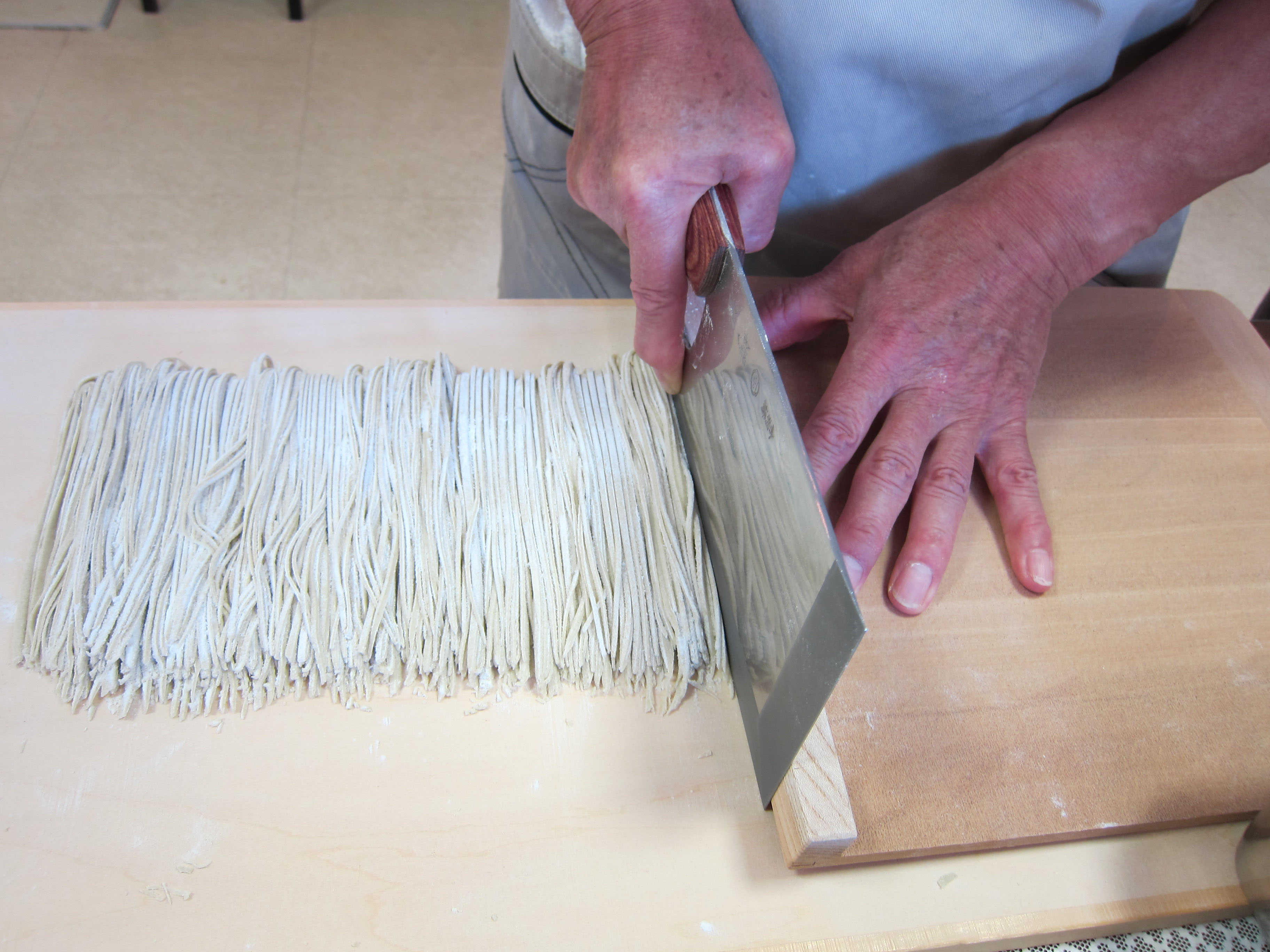The obsession with fresh, seasonal food in Japan extends to things that you may not even think of as having seasons, such as dried flour. Shin-soba-ko (new fall-harvest buckwheat flour, used in soba noodles) is eagerly anticipated every year by Japanese gourmets. While soba flour has two harvests, one from June to July and another from September to November, the fall crop is held in higher regard.
Fresh new-harvest soba flour is a little darker in color than regular soba flour, and when very fresh has a faint greenish tinge. The flour feels soft and ever so slightly moist compared with the dry feel of older flour. (In fact, new-harvest soba flour is perishable and needs to be stored well sealed in the refrigerator.) Noodles and other products made with new-harvest soba flour are nuttier in flavor and more bouncy and chewy (al dente) than those made with older flour.
The most highly regarded soba flour comes from the Shinshu region around Nagano Prefecture, although it's also grown in Hokkaido and other areas of Japan. Most soba consumed in Japan these days is imported from China or North America, but new-harvest soba is strictly domestic and mostly from Shinshu. Soba is so important to the economy of Nagano that it's an important tourism draw as well as an agricultural product.


















With your current subscription plan you can comment on stories. However, before writing your first comment, please create a display name in the Profile section of your subscriber account page.